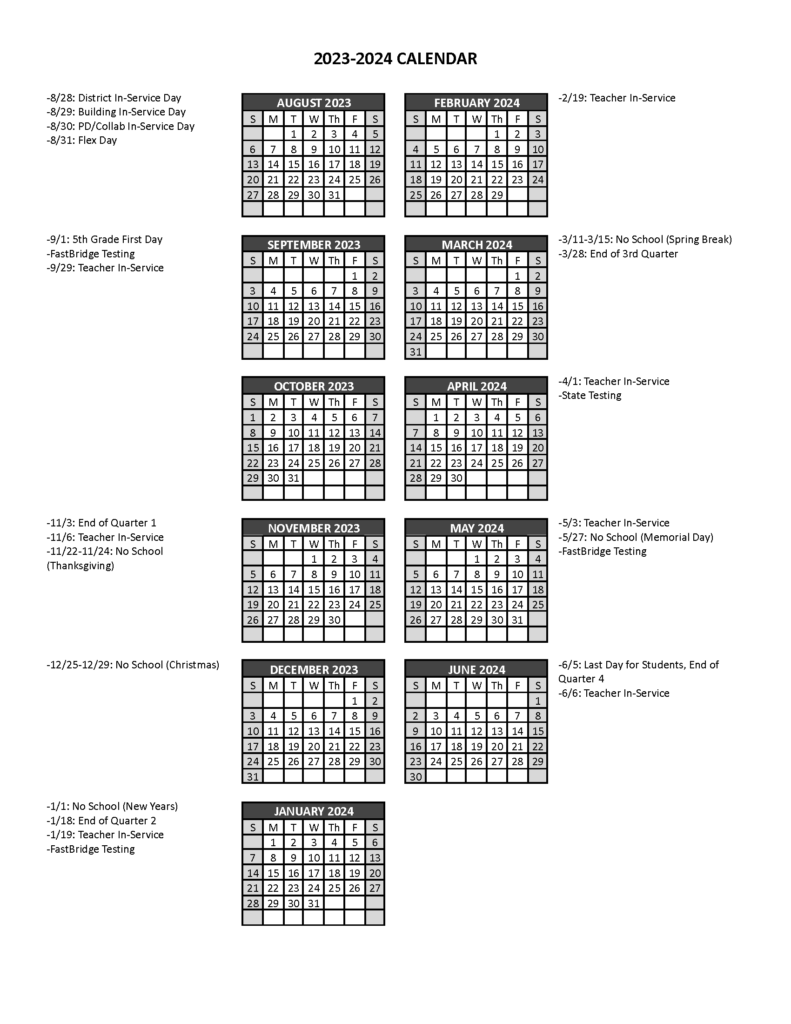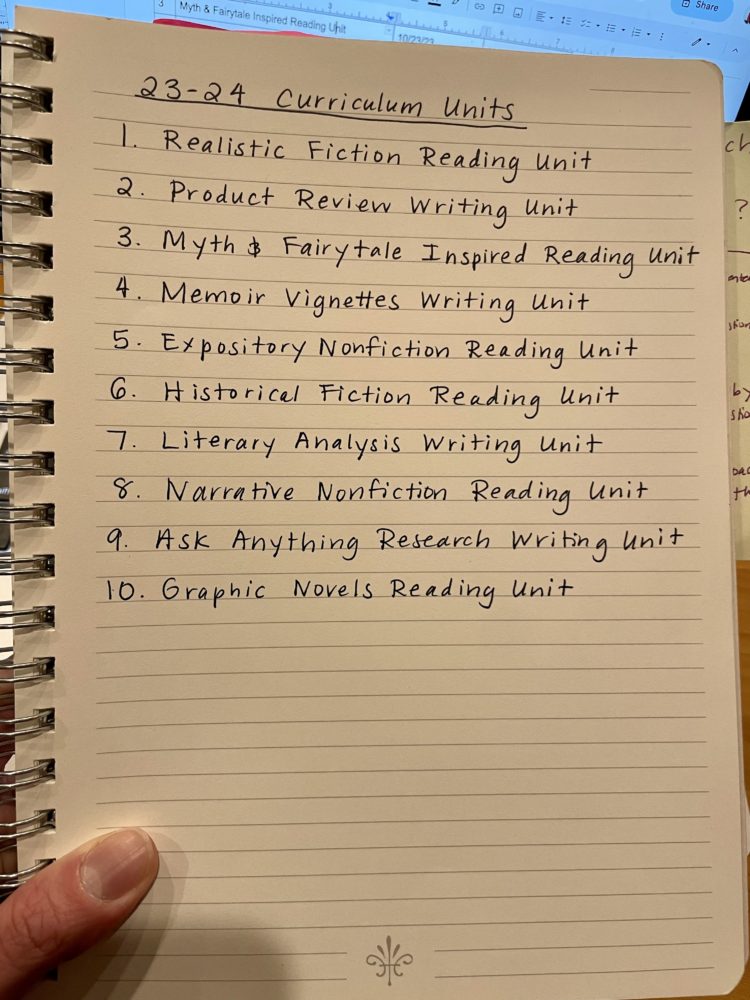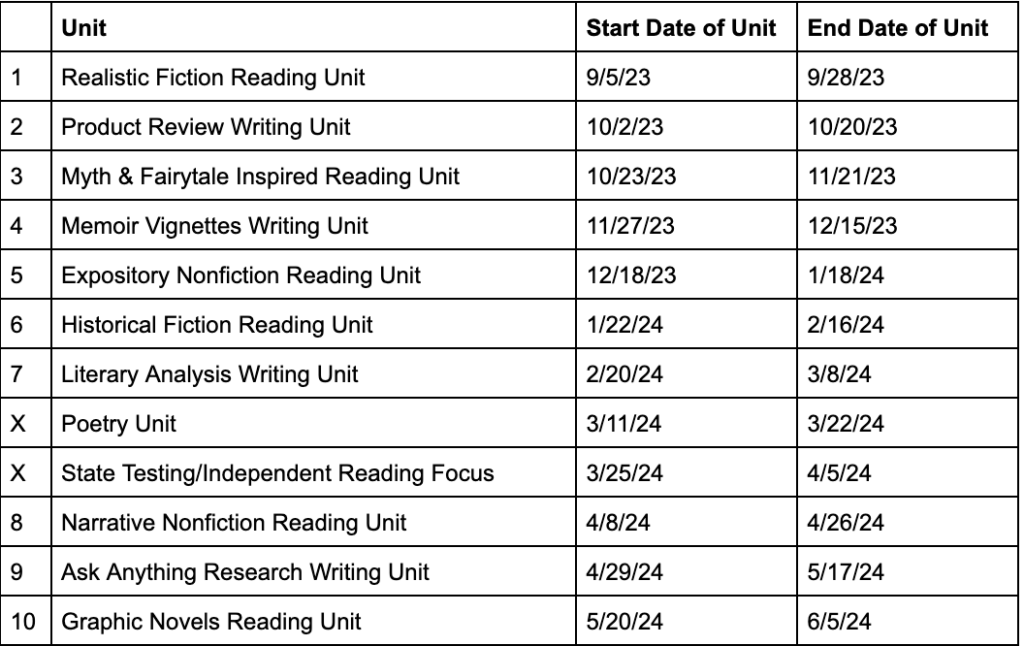I have a mind that races through the tasks I need to get done. Continuously. In the past, this has hindered how I feel throughout the summer because I’m already stressed about what I need to get done before the following school year. Two summers ago, I started doing an activity at the end of the school year that has alleviated so much stress for me throughout the summer. I map out my curriculum units and prepare my syllabus for the following school year before summer even begins.
I want to share this simple, yet effective, process with you today so that you can experience the same peace of mind this activity gives to me. Throughout this blog post, I will share free templates so you can replicate the same process.
Step One: Build Your School Year Calendar with Important Dates
Click here for the force link to the calendar template I use. I usually print out a district calendar of important dates and school breaks and then also consider other school year interruptions such as universal screening, state testing, and scheduled library time.

Step Two: Decide the Order of Your Units
Next up, decide the order of your curriculum units. When I select the order of my reading units and writing units, I think about the experience I will create across the school year for students. I aim to complete 6 reading units across the school year and 4 writing units. With the reading units, I want to incorporate a variety of genres, including fiction and nonfiction, so students get a diverse reading experience across the school year. For the writing units, I do one from each main genre of writing (narrative, informative / explanatory, persuasive / argumentative, research).
I alternate between reading and writing units to mix up the rhythm of the school year. For reference, I have 75 minutes daily with my ELA students and am responsible for teaching reading and writing during this block of time. I have sketched out scenarios for a variety of middle school ELA teaching situations and time frames in this document.

Step Three: Insert the Dates Into Syllabus
Now that you’ve visualized the calendar and mapped out your curriculum units, it’s time to do the last step. One of my teaching colleagues has always mapped out the dates of units before the school year begins, and her insistence on doing this really showed me how valuable it can be. I plan approximately 20 school days for reading units and approximately 15 days for writing units.
When mapping out the start and stop dates for each reading unit and writing unit, it’s great to look for natural stopping points. Whenever possible, end units the day before a break in the calendar so that you can have a fresh start after several days off of school.

Step Four: Other Elements of the Syllabus
If you want to get your entire syllabus done now that you have your school year mapped out, here are a couple other areas to consider adding to it.
- A Book List: List the books students will read in each of the reading units. I always include titles of our interactive read aloud and small group student book choices.
- Daily Routine: List the classroom activities students experience daily during a reading unit and a writing unit.
- Classroom Expectations: List your main classroom rules and expectations students will be asked to follow.
- Independent Reading: I always include information about our reading challenge and the importance of independent reading right on the syllabus.
- Grading Policies: I use Standards Based Grading to assess students’ reading and writing, so I feel it’s important to include information about this on the syllabus. (If you have questions about how Standards Based Grading and Learning works in my classroom, check out this YouTube video.)
You can access a free ELA Syllabus Template here. All you have to do is press “Make a Copy.” You can then save it into your Google Drive and personalize it to meet your needs.
I hope this post and free templates help ease the anxiety that can come from the looming fall to-do list that awaits. Sometimes knowing you have a plan and one thing ready to go (like your syllabus) can put your mind at rest.





